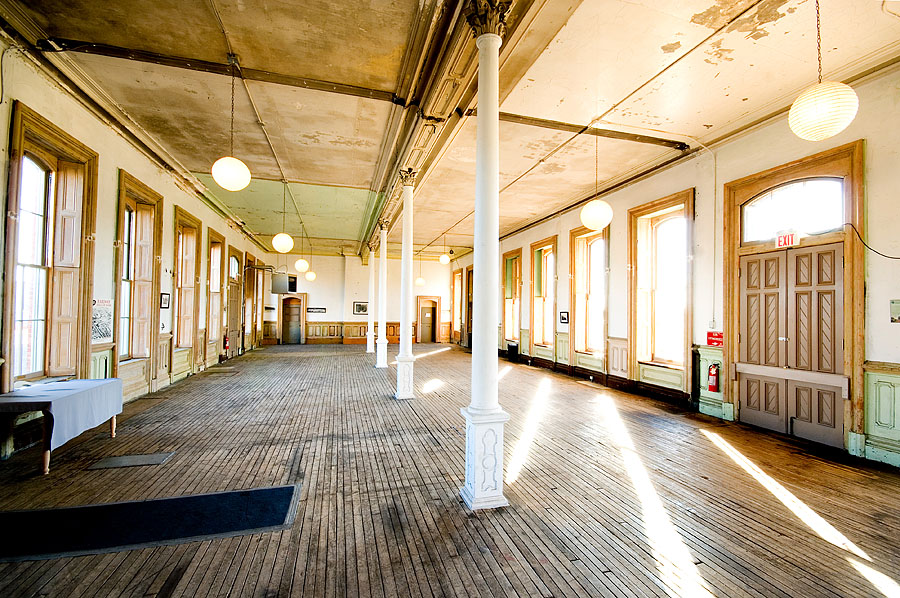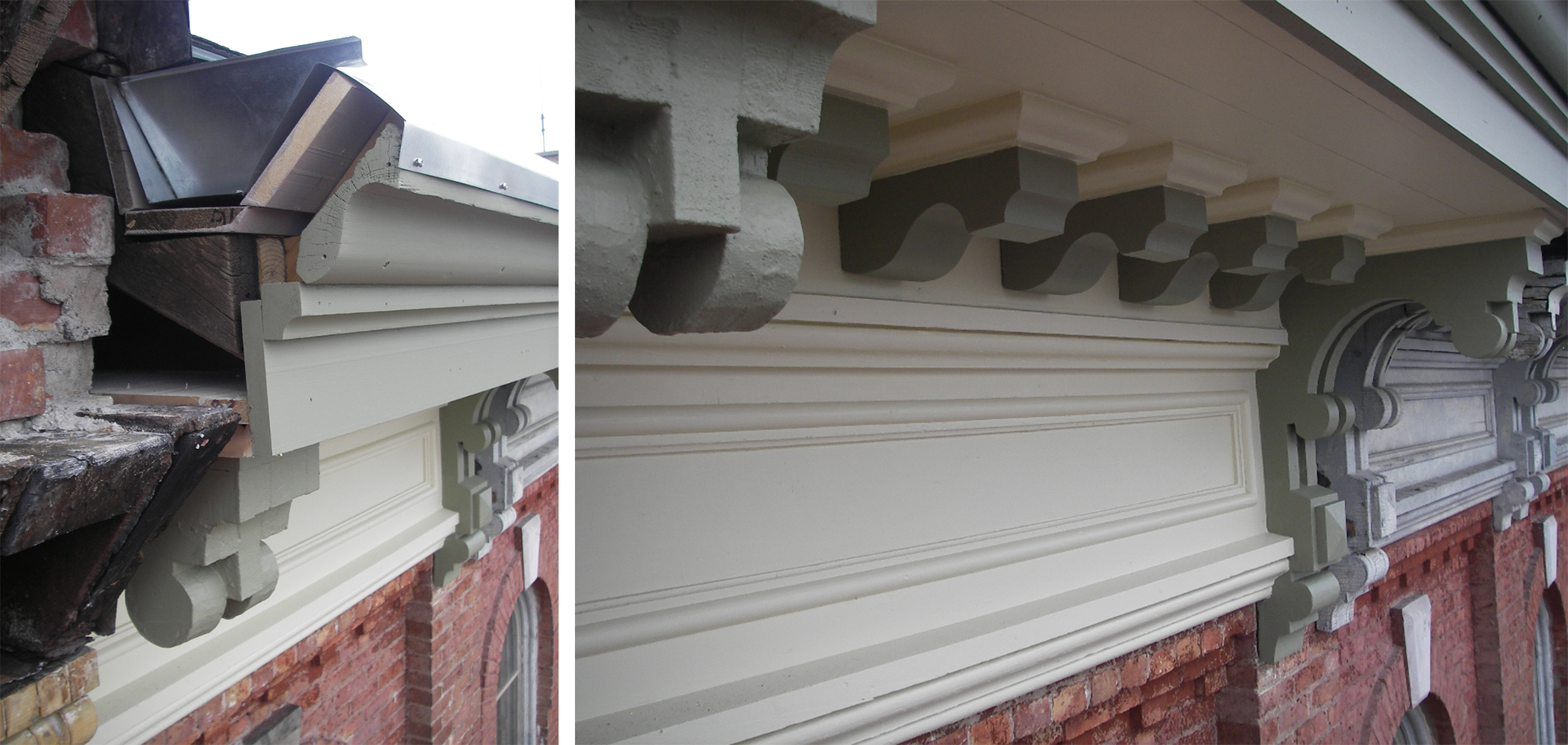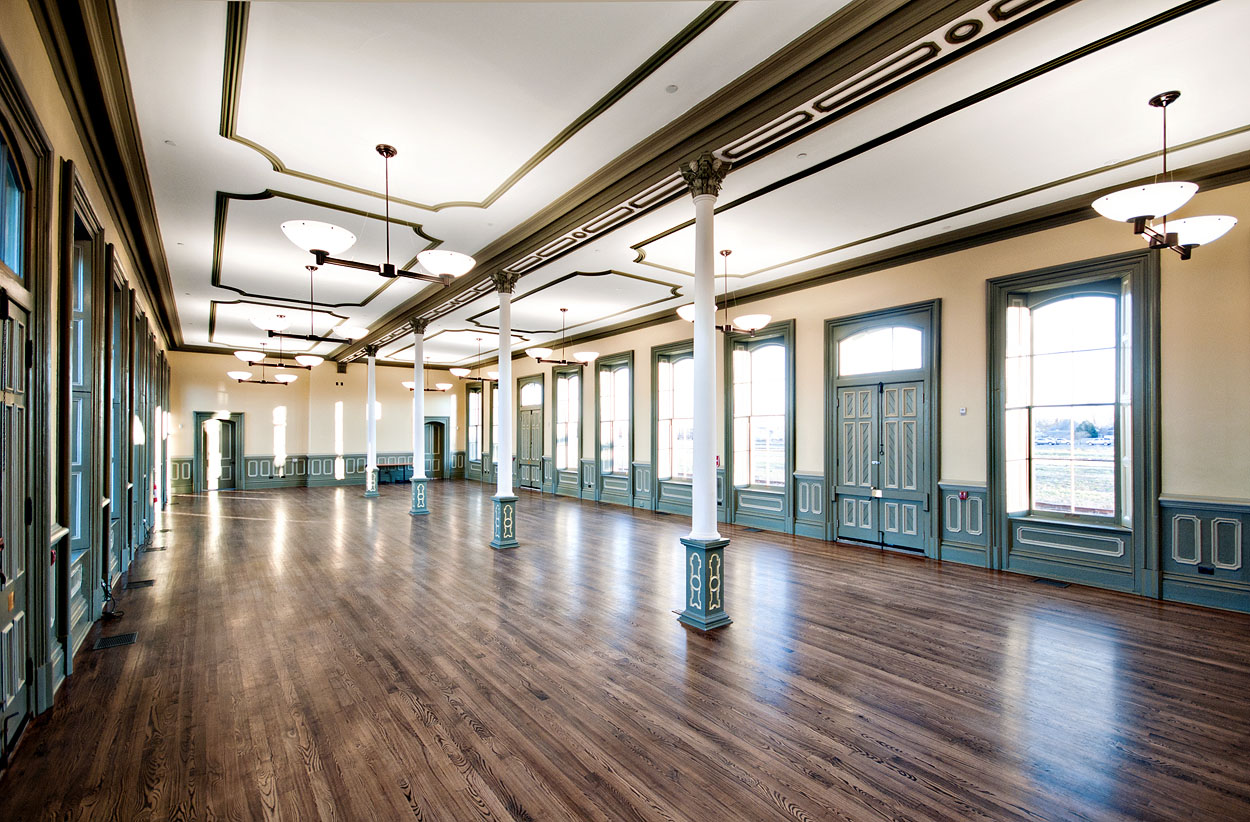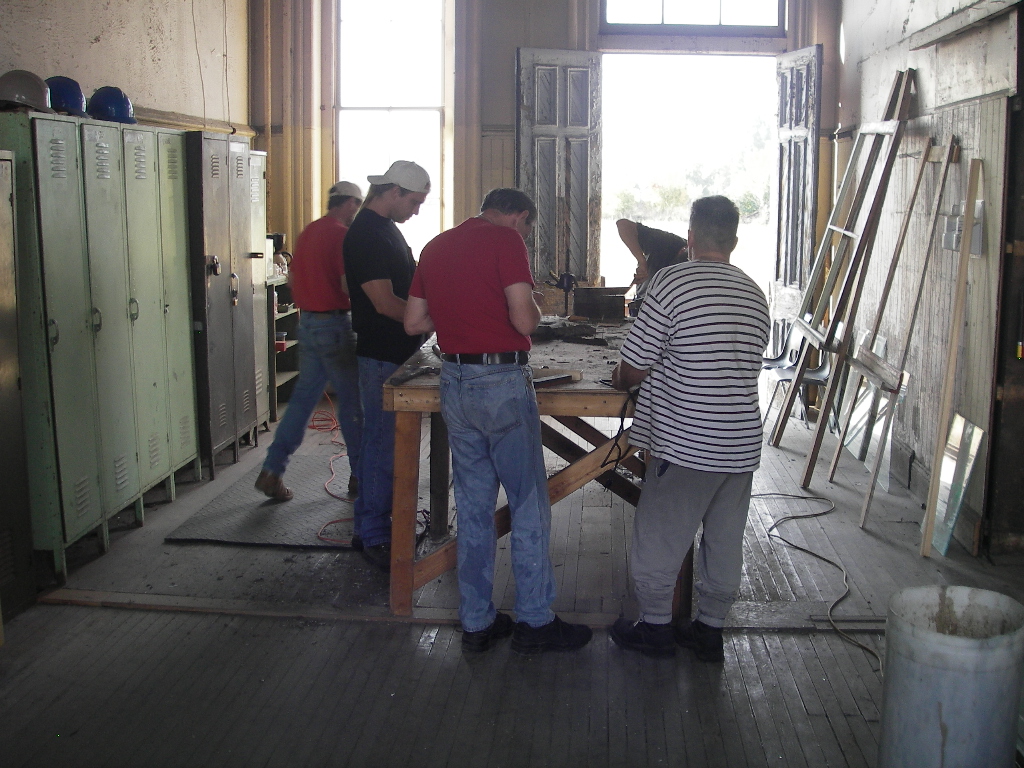Location: St. Thomas, Ontario
Completed: 1873 (original), 2006–2008 (renovation and adaptive reuse)
Architect: Edgar Berryman (1873), A+Link Architecture Inc. (2008 renovation)
Nominated by: Hon. Rob Flack, MPP (Elgin–Middlesex–London)
Some buildings are restored by mandate. Others by love and a sense of place. In St. Thomas, the revival of the Canada Southern Railway (CASO) Station was not only about heritage, but also about the power of community to come together, take ownership, and shape a future by preserving the past.
A Civic Centre in Ruins
Completed in 1873 with backing from American financiers, including the powerful Vanderbilt family, the CASO Station was once a critical node in an intercontinental railway network. Its grand symmetrical design, with characteristics typical of the Italianate style, stood out from its peers and communicated its importance. Sure enough, through the early 20th century, the station served as one of Canada’s busiest—a key junction in the movement of goods and people between Detroit and New York. The station fuelled the growth of St. Thomas, serving as a civic landmark and an engine of migration, memory, and mobility. Lucille Ball and Babe Ruth are said to have passed through its doors.
By the early 2000s, the station had fallen into deep disrepair. Its windows were boarded, its roof failing, and its interiors merely a shadow of their former grandeur. When the city declined an offer to buy the building for $55,000, its future looked grim—until a group of local residents stepped in. Among them was architect Ed van der Maarel of A+Link Architecture, who had lived in St. Thomas his entire life, and together they negotiated a purchase from CN for $90,000. They were even successful in asking the railway company to hold the mortgage while they fundraised.

An interior space before the renovation, which proved popular for weddings and events despite its rough state. Image courtesy of A+Link Architecture Inc.
More than Restoration
From the start, the goal was not to restore the building to its original state, but to make it usable again and to bring it back into civic life. With no firm schedule or budget, the team approached the station as a series of unfolding opportunities. Even before construction work began in earnest, locals eager to experience the grand station insisted on renting the historic space for weddings and photo shoots, in spite of the building’s rough condition.
The team would eventually restore one section of the Italianate façade—a typical eight-foot bay complete with soffits, trims, and windows—as a prototype. That detail then became the model for successive phases of work as time, money, and volunteers allowed, until all 354 feet of the station’s length, or 44 repeated bays, were rehabilitated.

A restored section of the exterior, which was used as a prototype to restore the rest of the building. Image courtesy of A+Link Architecture Inc.
Inside, a similarly sensitive approach was taken, leaving most of the original layout intact. What was once the superintendent’s office now houses an MPP’s office; the 33-by-79-foot dining room, used historically by rail passengers, has become a venue for weddings, dinners, and public events. The old kitchen was renewed as a functioning, modern kitchen in the same space, and the former men’s and women’s waiting rooms have been turned into a museum space for the North American Railway Hall of Fame.
Elsewhere, new functions slide in quietly. Smaller offices are rented out to local professionals, and a coffee roastery operates in what was once a utility space. The building today is fully sprinklered, and modern mechanical systems have been tucked discreetly into the attic and basement.
“We were purists,” van der Maarel says when speaking of mechanical upgrades. “We didn’t want anything visible on the outside of our building.”
The result is a space that feels both timeless and current; it is rich with texture, but alive with daily use.

A renovated space brings back colour, depth, and updated lighting. Image courtesy of A+Link Architecture Inc.
A True Community Project
What truly sets CASO Station apart is the number of hands that helped shape it. Early cleanup efforts were powered entirely by local volunteers, many of whom had some direct connection to the building and the railway. One local auto worker, employed by the nearby Ford plant, offered to recreate plaster capitals from custom-made moulds. His work helped replicate the ornate tops of the station’s structural columns, replacing elements that had long since deteriorated.
Stories like his weren’t the exception but the norm. A retired carpenter oversaw the restoration of more than 200 windows and doors, aided by a grant-funded program that trained local residents in heritage woodworking. Over time, a full woodshop was set up at one end of the building, transforming the station into a classroom. People learned to repair sashes, reglaze panes, and replicate mouldings—skills they soon applied to other heritage projects across Ontario, even receiving windows shipped in from other projects that required restoration.
Altogether, an estimated 200 people were directly involved in the project, perhaps more, if you count those who donated old glass on weekends or simply came to lend a hand. In every way, CASO Station has become a community classroom, employment incubator, and gathering place all at once.

Some of the many volunteers who worked on the building. Image courtesy of A+Link Architecture Inc.
A Platform for the Present
Though the trains no longer run, CASO Station continues to connect people. It’s become a civic centre in the truest sense: a space for learning, for business, for celebration, and for remembering. Few buildings of its age maintain such continuity of layout or purpose.
“You could take the floor plan from 1872 and overlay it over today's floor plan and it'll be… 98% the same,” van der Maarel says.
Yet what is happening inside is completely different. CASO Station is proof positive that retaining and restoring our heritage can be part of making room for the future of our communities.
This post is part of the OAA’s Queen’s Park Picks 2025 series, where Ontario’s Members of Provincial Parliament (MPPs) were encouraged to nominate a building in their riding for a chance to learn more about it. This year, MPPs were asked to consider various typologies related to “reshaping communities” when making their suggestion, tying into the 2025 OAA Conference theme. Check out the rest of the series to learn more about great buildings across the province.